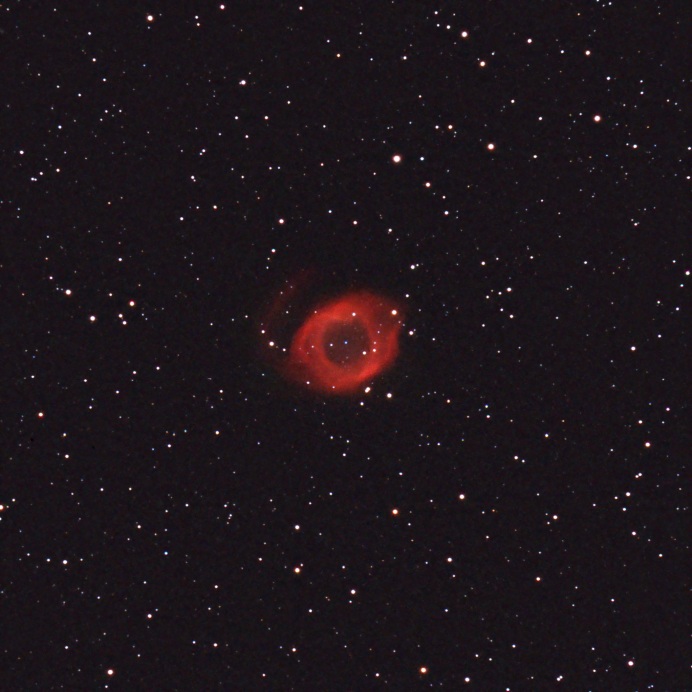
NGC 7293, the Helix, or Helical Nebula, is the largest planetary nebula in the sky. It measures nearly 13 arcminutes in diameter, thus covering an area of about 1/5th the size of the full moon, and shines at the photographic magnitude 6.5, which makes it also the brightest planetary nebula in the sky. However, because of its large size, the surface brightness is low, thus it can be difficult to observe in nights of poor transparency.
The nebula is quite close - only at a distance of about 540 light years, this is an average distance based on many widely discrepant figures. The Helix is named because its ring shape resembles a helical coil. The whole cloud of gas and dust which forms the ring is at rapid outward movement - doppler shift observations measured an expansion of 20-40 kilometers per second. It was ejected by the bluish central star, which is in the final stages of its evolution from a giant to a dwarf. Ultraviolet emission from the hot star - which has a surface temperature of about 35.000 K - ionizes the surrounding gas shell, thus making it emit light.
Exposure Data